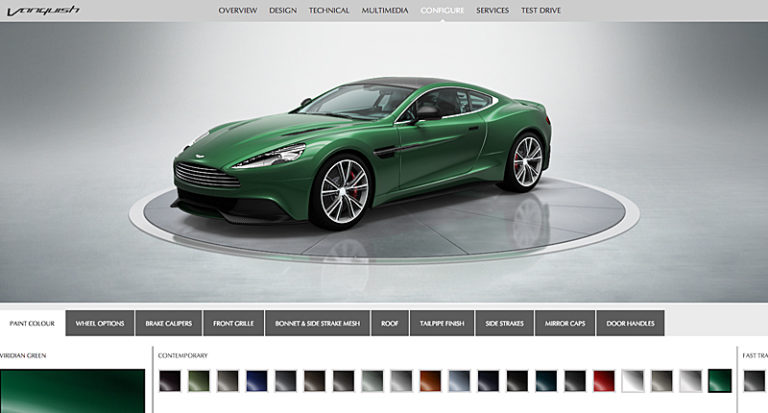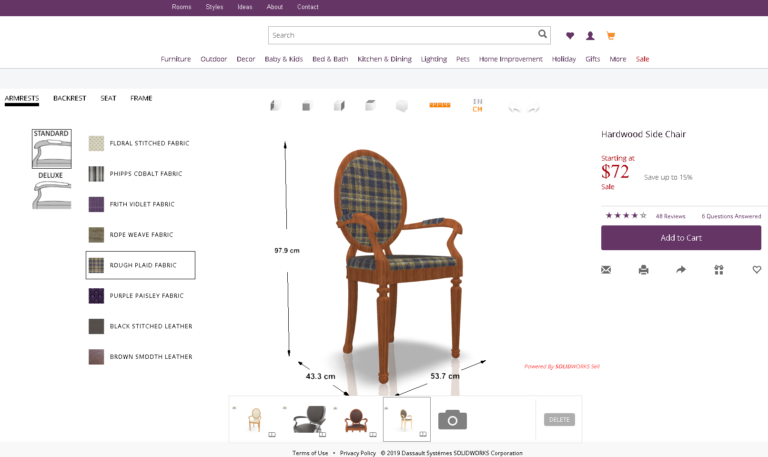30-second summary:
- The internet is beyond saturated, which means challenges for marketers who want to attract and engage customers.
- Interactive 3D configurators can help companies can create smooth, interactive experiences that will keep customers engaged for longer periods and have them coming back for more.
- PureWeb’s Elly Uz details which industries are uniquely suited to having 3D configurators enhance the customer experience.
For roughly two decades, the rapid growth of people new to the internet meant that unique traffic to websites grew steadily.
This was generated in many ways: Digital ads were enough to bring in new users, and standard websites with images, something to read, and maybe even some videos were enough to keep viewers interested.
Now, the web’s growth rate has more or less plateaued in developed countries. Today’s users are accustomed to the typical eye-catching tactics of online marketing, and that means it’s more difficult to make a splash in the mainstream press or even on social media.
If you’re a marketer trying to engage prospects online, you know that it’s challenging to attract customers and keep them engaged. Especially when it comes to selling high-dollar items, you need to figure out how to make customer interactions more tangible and active.
Despite this, many brands are still unsure about how to properly roll out these online experiences, not to mention how they tie into the buying process. Others are concerned about the costs involved and whether there will be a true return on investment.
Today, many real-time 3D experiences are being deployed to virtual reality platforms, but those solutions are missing out on buyers who are shopping from home on their mobile devices and laptops.
Interactive 3D applications like configurators offer an exciting new way to engage users who are bored with traditional digital tactics.
They can serve as lead-generation tools in instances when users are prompted to share their information and they provide insight into preferences when customer use data is compiled, and that can put you ahead of the competition.
Enrich the customer experience with real-time 3D product configurators
This technology offers a way to provide photorealistic experiences for all sorts of products that will not only pique consumer interest, but also increase conversions.
Using 3D creation technology like Unreal or Unity gaming engines, companies can create smooth, interactive experiences that will keep customers engaged for longer periods and have them coming back for more.
While all industries can benefit from this technology, a few sectors are uniquely suited to having configurators enhance the customer experience. If you work in one of these areas, it may be time to check out this technology.
1) Automotive

Prospective car buyers crave customization. A car is no small purchase for most people, and the more that buyers feel a car or truck is perfectly suited to them, the more satisfied they will be with their ultimate purchases.
Buyers want to be able to peek inside their dream car, observe how it handles different terrain types, and feel the hum of the engine. Current online car shopping experiences may let consumers change the color of the interior, but interactive 3D streaming takes the experience to a new level.
In addition to photorealistic 3D models for all sorts of customizations, from paint colors to wheels and interiors, this technology means users can look under the hood, check out different engines, and even take the car “on the road.”
With the help of gaming engines, you can create virtual test tracks with different environments and settings to show customers how a vehicle will drive in the real world.
We’ve already seen this technology generate buzz in the industry. When Chevrolet released its interactive 3D configurator for the 2020 Corvette Stingray, it was so popular that Chevy’s servers couldn’t handle the traffic.
Even with a website that lagged, reverted to 2D images, and made many users wait, more than 940,000 virtual cars were built using the configurator in just two weeks.
If it had been done over a more stable platform, even more users would have been able to engage, which ultimately would have turned to increased leads and sales.
2) Real estate and construction

A home is an emotional purchase. Though the experience itself can be stressful because buyers have so many factors to consider, buyers understandably put emphasis on how the home makes them feel. This could be in person (an open house) or online (photos or a virtual tour).
But what about homes that have yet to be built? When it comes to selling a pre-construction home, photorealistic 3D streaming can create an unmatched customer experience and be the only way to truly capture the feeling of a home.
Interactive tours powered by photorealistic 3D streaming allow prospective buyers to browse various finish upgrades — from flooring options to countertops — in real time.
This technology is especially well-suited to real estate because agents, family members, and friends can interact with buyers and make suggestions or give their opinions.
The result is an experience that feels like walking through a fully customized home, rather than a one-size-fits-all model. And thanks to features like adaptive lighting, which can mimic the way sunlight shines through a home at different times of day, or the ability to show views as they would appear from each specific unit, buyers can feel like they’re really there.
3) Interior design and furnishing

Once the house itself is built, plenty of uses still exist for interactive 3D configurators. These tools can act as interactive showrooms if you’re in the furniture or interior design business. You now have a digital version of the room in which limitless options for furniture can be tested out.
Interactive 3D offers more information than a simple picture — it provides a real idea about what a particular design or product will look like in the customer’s home.
Configurators can show you exactly how well that couch will fit in the corner of the room or how much space will be left in the bedroom once a bed, a chest of drawers, and nightstands are added.
4) Luxury goods

The luxury goods shopping experience has long been marked by bespoke service in small, exclusive boutiques. Thanks to the internet, consumers can now browse luxury items from the comfort of their couches, but that doesn’t mean they want to sacrifice the made-to-order experience.
Similar to the car-buying process, consumers want to try on designer shoes, feel the texture of an expensive purse, see how jewelry sparkles under different lighting — all before they buy.
While interactive 3D streaming won’t let your customers physically touch products, it will allow them to experience those products in a totally different way from your typical e-commerce site.
With a photorealistic 3D configurator, your buyers can virtually pick up the products, move them around, and see how they look in different colors and with varying types of material.
They can even test out different lighting conditions. And that interactivity leads to greater conversions. After implementing a 3D catalog, TSUM, the largest department store in Eastern Europe, saw a conversion rate increase of 40%.
If companies want to get the online attention of their customers and keep it, 3D configurators are needed for the next evolution for your e-commerce website.
If you’re a marketer looking to revitalize your digital approach and increase conversions for high-dollar items, this technology could help you today and get your company ready for what tomorrow brings.
Elly Uz is the marketing manager at PureWeb, an interactive 3D streaming service based in Canada. She is an experienced storyteller who oversees all aspects of brand and social engagement around the use of innovative technologies for enterprise, including 3D visualization, extended reality and digital experiences.










